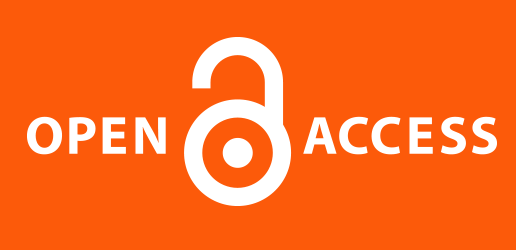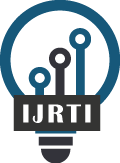|
International Journal for Research Trends and Innovation
International Peer Reviewed & Refereed Journals, Open Access Journal
ISSN Approved Journal No: 2456-3315 | Impact factor: 8.14 | ESTD Year: 2016
Scholarly open access journals, Peer-reviewed, and Refereed Journals, Impact factor 8.14 (Calculate by google scholar and Semantic Scholar | AI-Powered Research Tool) , Multidisciplinary, Monthly, Indexing in all major database & Metadata, Citation Generator, Digital Object Identifier(DOI)
|
Issue: December 2025
Volume 10 | Issue 12
Review Result and Publication of Paper within : 2-3 days
Click Here For more DetailsFor Authors
Forms / Download
Published Issue Details
Editorial Board
Other IMP Links
Facts & Figure
Impact Factor : 8.14
Issue per Year : 12
Volume Published : 10
Issue Published : 115
Article Submitted : 19623
Article Published : 8077
Total Authors : 21364
Total Reviewer : 770
Total Countries : 147
Indexing Partner
Licence
This work is licensed under a Creative Commons Attribution-NonCommercial 4.0 International License







|
Published Paper Details
|
|
| Paper Title: | Evaluate the current prescription practice in newly diagnosed hypertensive patients; Treatment comparison with ISH 2020 Guidelines |
| Authors Name: | Dr. Srijana Tamang , Dr. Luai Fahd Mohammad Alhetari , Dr. Balakeshwa Ramaiah , Dr. Prashant Kumar Sah |
| Download E-Certificate: | Download |
| Author Reg. ID: |
IJRTI_185057
|
| Published Paper Id: | IJRTI2301017 |
| Published In: | Volume 8 Issue 1, January-2023 |
| DOI: | |
| Abstract: | Background: Hypertension is a very common medical problem worldwide. It is under-recognized and poorly treated. There is scope for significant improvement in hypertension therapy since only one-third of hypertension in India is diagnosed, of which only one-third is well treated and well controlled. Objective: The main objective of this study is to evaluate the current prescription practice of antihypertensive drugs in newly diagnosed hypertensive patients and to determine whether the prescription pattern is in adherence with ISH 2020 guidelines for the management of hypertension. Method: A prospective observational study was carried out for six months in a tertiary care hospital across the medical and cardiology services. Result: A total of 73 prescriptions were analyzed. Our results revealed that 54.80% were male while 45.20% were female, of which 49 (67.1%), 10 (13.7%), 6 (8.2%), 5 (6.8%) patients were receiving one, two, three and four anti-hypertensive drugs, respectively. Only 3 patients were on non-pharmacological treatment. In our study out of a total of 61 (83.56%), patients received essential standard care and 12 (16.43%) patients received optimal standard care, among which the majority, 64 (87.67%) patients achieved the targeted BP control and 9 (12.32%) didn't achieve the target BP. The most commonly prescribed anti-hypertensive drugs, whether in mono or combination regimens, were CCBs (amlodipine, cilnidipine), followed by ARBs (telmisartan, valsartan), diuretics (hydrochlorothiazide, torasemide, furosemide, mannitol), β-blockers (atenolol, bisoprolol, metoprolol), and ACE inhibitors (ramipril, enalapril). The mean systolic blood pressure Mean±SD of SBP/DBP in the final and first visit was 129.98±13.13/84.30±9.45 mmHg and 154.12±13.21/92.72±14.08 mmHg, respectively. A significant reduction (p<0.0001) in systolic and diastolic blood pressure was observed. Conclusion: The CCBs (Cilnidipine) and ARBs (Telmisartan) were the drugs of choice for hypertensive patients as a single drug and combination drug therapy. As per the International Society of Hypertension (ISH), 2020 guidelines, the majority of the subjects have achieved targeted BP goals. Our results reveal that the prescription practice of anti-hypertensive medication and adherence to guidelines is optimal at the study site. |
| Keywords: | Newly diagnosed hypertension, prescription practice, antihypertensive, ISH |
| Cite Article: | "Evaluate the current prescription practice in newly diagnosed hypertensive patients; Treatment comparison with ISH 2020 Guidelines", International Journal of Science & Engineering Development Research (www.ijrti.org), ISSN:2455-2631, Vol.8, Issue 1, page no.95 - 108, January-2023, Available :http://www.ijrti.org/papers/IJRTI2301017.pdf |
| Downloads: | 000205217 |
| ISSN: |
2456-3315 | IMPACT FACTOR: 8.14 Calculated By Google Scholar| ESTD YEAR: 2016 An International Scholarly Open Access Journal, Peer-Reviewed, Refereed Journal Impact Factor 8.14 Calculate by Google Scholar and Semantic Scholar | AI-Powered Research Tool, Multidisciplinary, Monthly, Multilanguage Journal Indexing in All Major Database & Metadata, Citation Generator |
| Publication Details: |
Published Paper ID: IJRTI2301017
Registration ID:185057
Published In: Volume 8 Issue 1, January-2023
DOI (Digital Object Identifier):
Page No: 95 - 108 Country: Bengaluru, Karnataka, India Research Area: Health Science Publisher : IJ Publication Published Paper URL : https://www.ijrti.org/viewpaperforall?paper=IJRTI2301017 Published Paper PDF: https://www.ijrti.org/papers/IJRTI2301017 |
| Share Article: | |
|
Click Here to Download This Article |
|
| Article Preview | |
|
|
|
Major Indexing from www.ijrti.org
| Google Scholar | ResearcherID Thomson Reuters | Mendeley : reference manager | Academia.edu |
| arXiv.org : cornell university library | Research Gate | CiteSeerX | DOAJ : Directory of Open Access Journals |
| DRJI | Index Copernicus International | Scribd | DocStoc |
ISSN Details
 |
 |
ISSN: 2456-3315
Impact Factor: 8.14 and ISSN APPROVED,
Journal Starting Year (ESTD) : 2016
DOI (A digital object identifier)
 Providing A digital object identifier by DOI.ONE How to Get DOI? |
Conference
Open Access License Policy
Important Details
Join RMS/Earn 300
WhatsApp
Click Here
Click Here
Indexing Partner |
|||
| Copyright © 2025 - All Rights Reserved - IJRTI | |||






